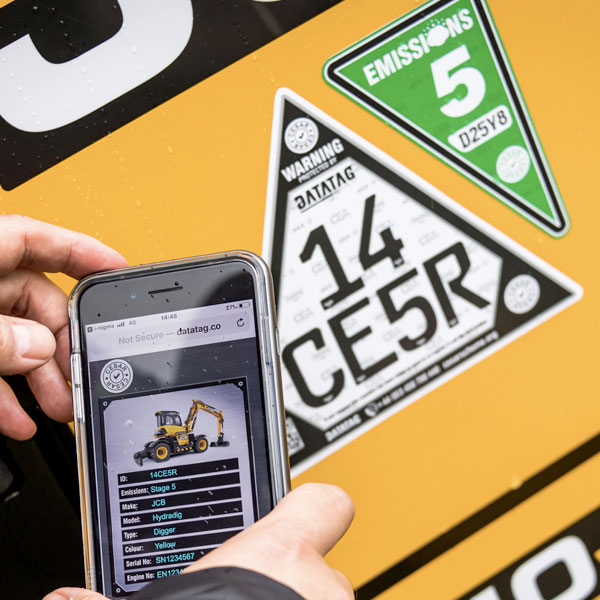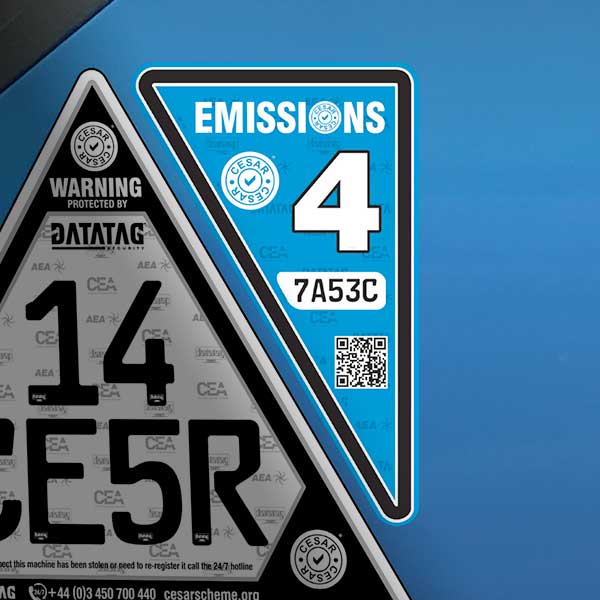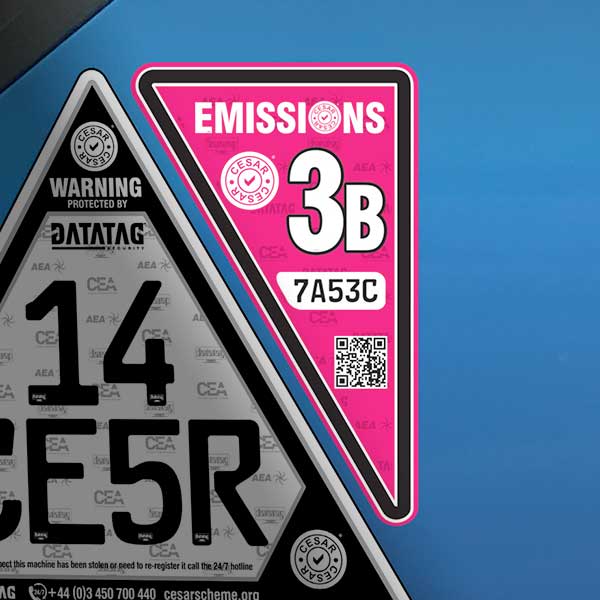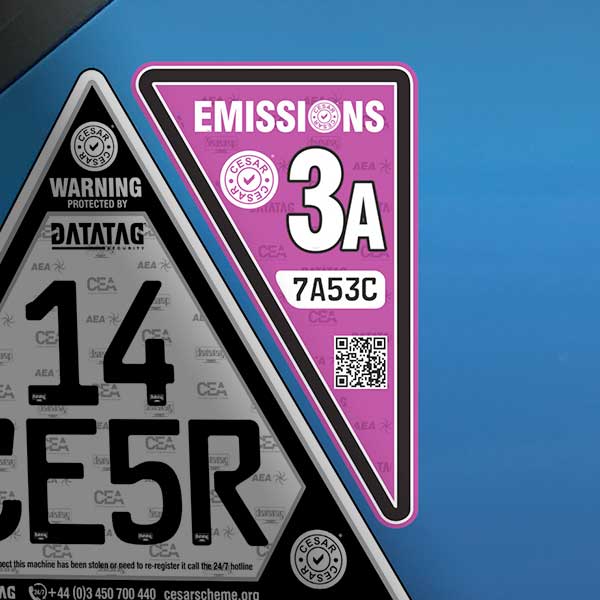CESAR ECV
CESAR Emissions Compliance Verification (ECV)
Tech Overview: TE ID Labels
CESAR ECV is an invaluable 'bolt-on' product which compliments the existing CESAR Security System and additionally allows quick and easy verification of a machines emissions category. This feature, using tamper evident colour coded labels with a unique alpha/numeric code is linked securely to a machine's unique CESAR identity and ensures complete integrity of the system.
The Emissions Compliance Verification (ECV) application for CESAR is the single biggest development since the scheme was launched as an anti-theft initiative in 2007. With the introduction of Low Emission Zones and "green" construction sites, there is an urgent demand for the quick identification of the certified emission levels of machines brought on to sites.
In developing ECV we have had some great input from HS2, the Energy Savings Trust and London boroughs. The mix of a secure database of machines' vital information plus an easy to read and scan visual sticker cuts out a lot of work for construction site managers and local authorities
With an industry looking increasingly on the environmental impacts of construction work CESAR ECV will be invaluable to companies required to manage large scale projects and multiple contractors ensuring plant on site is as 'clean' as is possible.
What is ECV?
Emissions Compliance Verification (ECV) is a clear and concise system to make it easier to identify the emissions stage of a machine. The tamper evident colour coded labels provide a quick reference point, supported by a database of detailed machine information, to allow site managers to ensure they are meeting strict new emission standards on their sites.

CESAR and the CEA
The new scheme is a ‘bolt-on’ product which compliments the existing CESAR security system, provided by the CEA and powered by Datatag technology. With an increasing demand on creating environmentally conscious construction sites the CEA recognised a need to be able to quickly identify a machines credentials in a universally understood format. By combining the scheme with CESAR marking, the industry can combine data to build a complete log of the machine’s key information.
Why is ECV so important?
Without ECV applied to a machine the process of checking the emissions is very labour intensive and can cause major delays on site to collate the appropriate information. There is a heavy reliance on plant hire companies to provide detailed information to a site prior to starting work which is then difficult to manage on site. The CESAR ECV scheme resolves this by providing a simple reference through the colour of the label, plus a QR code which can be scanned to provide key asset data.
What does ECV include?
Currently there are four different labels to identify the emissions stage of the machine and provide the reference point to quickly identify which stage the machine is certified as. These include electric, stage 5, stage 4 and stage 3B. As machine technology changes more options will be added to include new stages and classifications.
How to add ECV?
There are multiple options for how to add ECV to your plant depending on the current markings on your machine. In order to fit ECV, CESAR scheme must also be fitted, therefore please choose from the following options dependant on your current situation.
(1) Specify with your supplying manufacturer to fit on the production line,
(2) Upgrade existing CESAR marked machinery to ECV,
(3) Contact your nearest Authorised CESAR Scheme dealer for a full system fit
Click the image below to download the flow chart guide on how to comply with the Official Emissions Compliance Schaem and Inititive.













